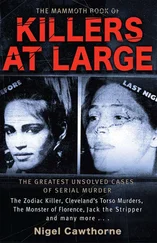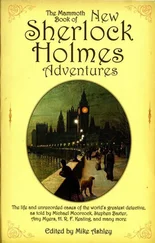‘I will meet you in front of this gallery tomorrow morning at nine o’clock. Do not be late.’
‘I will be punctual, mein Herr .’ He hesitated. ‘I will need to make sketches. I cannot copy this from memory.’
‘That has already been taken care of.’ The old man turned to leave.
‘I do not know your name.’
‘Names are not necessary. Until tomorrow.’ He marched out of the gallery at a speed that belied his apparent age, leaving the younger man staring at the painting.
The young man arrived on the flight of steps in front of the Walker Art Gallery ten minutes before the appointed time. He wished to be punctual. Besides, he’d been eager to escape his brother’s claustrophobic flat, away from his sister-in-law’s hostile glances, the baby’s screams, and the smell of damp and stale cooking.
He watched the traffic on William Brown Street; horse-drawn trams and carriages mingling with the noisy new-fangled motorcars of the wealthier classes. At nine on the dot, a small black carriage pulled by two black horses drew up at the bottom of the steps. The coachman’s black muffler was pulled up to his nose, protecting his nostrils from the thin spring mist drifting in from the river and masking the wearer’s features. The carriage door opened to reveal the old man, who leaned forward and beckoned the young man in.
For a moment, he hesitated on the steps. He had no idea where he would be taken or what would happen when he reached his destination. But since he’d been refused entry to the Viennese Academy of Fine Arts he’d lived through desperate times, existing on the streets and taking any menial work that was on offer. This strange old man, judging by his well-cut coat, his silk hat and his talk of a large house, was clearly rich. If he didn’t seize this opportunity, there might never be another.
With the boldness of a man who has nothing to lose, he climbed up into the carriage and took his seat opposite the man he hoped would become his benefactor. The old man did not smile or acknowledge him in any way. Instead, he knocked on the roof of the carriage with his ebony walking cane and sat back to gaze out of the window. As soon as they were out of the bustling centre of the town, he pulled down the blinds on both sides, making it impossible to see out, but still said nothing.
‘Is it far?’ the young man asked, breaking the uncomfortable silence.
‘It is some way from the centre of the town, but do not fear, my driver will return you to the art gallery when you are finished for the day.’
He fell silent again. The drawn blinds had made it dark in the carriage, but the young man was aware of the other’s cold stare, as though he were trying to penetrate his mind. Or his soul. He was relieved when the coach eventually slowed to a halt. The old man waited, sitting perfectly still until the coachman climbed down and opened the door. He alighted first then the young man followed, blinking in the daylight and taking in his surroundings.
It was a large, gracious house built of the local red sandstone with a gravel drive that swept up to an impressive portico before trailing away through a dark avenue of thick rhododendrons. From the birdsong in the air, they might have been in the countryside. However, from the length of the journey, the young man calculated that they were probably in some wealthy suburb amongst the opulent homes of those who had made their fortunes from the ships he’d seen on the river. It was a private place, not overlooked. All sorts of evil could go on in such a place.
The old man led him into a hallway with an elaborately tiled floor and a grand mahogany staircase. The young man stared at the paintings on the walls as he walked in and recognised a Gainsborough and a Reynolds along with some works by the Pre-Raphaelite brotherhood. A Turner seascape hung in pride of place at the foot of the staircase, but there was no time to stop and admire the master’s brushwork. He was hurried up the stairs and along the landing and, when they came to a door at the end of a passage, the old man reached out, turned the handle and the door swung open to reveal a fully equipped studio. Spring light streamed in at the large windows on to a set of preliminary sketches set on easels around the room and a large canvas bearing faint charcoal outlines. He could see faint numbers between the lines and, on a far wall, hung a large sheet of paper with myriad dabs of colour, all with numbers printed neatly beside them. On a separate easel stood what the young man recognised as a photographic image of the painting he’d been commissioned to copy.
‘I took the photograph myself,’ the old man said, with a hint of pride. ‘I told the attendant that I was a visiting art professor from Berne. I have spent some time in Switzerland so it was an easy matter to assume the manner of speech. And I am a professor, although not of art, alas.’
This was the most forthcoming the man had been and the young man wondered if he would reveal more about himself as time went on. But then he began to bark instructions, as if he was afraid he’d given too much away and wished to restore the distance between them. He said that the colours on the wall were the exact shades the artist Yeames had used in his painting and that they corresponded to the numbers on the canvas. The artist was to observe the photographic image as he worked. This was to be a facsimile that would fool the world, but not necessarily an expert.
‘Who did the preliminary sketches and the outline?’ the young man asked when the professor had finished speaking. ‘They’re very good. Very accurate.’
The professor’s face clouded and he pressed his thin lips together. ‘Somebody who was alive but is now dead. Somebody who asked too many questions.’
The young man knew the words were a warning and he suddenly felt afraid. He was longing to ask why the professor had chosen this particular painting but he knew he had to tread carefully.
‘It is time to get to work,’ the professor said. ‘My man will bring you luncheon at midday and you will be returned to the gallery at four o’clock.’
With that, he left the room and, when the door shut, the young man heard the hollow click of a key turning in the lock.
He was a prisoner.
The work proceeded well, but his attempts to communicate with the taciturn man who brought his lunch had failed. The man was huge, with a hairless scalp, tattooed arms and a face that bore the scars of many dockland fights. The only sound he emitted was a low grunt and when he half opened his mouth he appeared to have no tongue. This wasn’t the sort of servant he would have expected a man of the professor’s obvious learning to employ. He wondered if the professor was providing work for an unfortunate out of charity. But somehow he thought this unlikely.
He worked on, barely aware of the hours passing, until the light at the windows was beginning to fade. By the time the studio door was unlocked and opened, he had filled one corner of the canvas with colour, but he knew the task would take several weeks. He was glad his brother never showed any curiosity about where he went. He and his wife, Bridget, were just glad to get him out of the flat.
He did not see the professor again that day and, when the man with no tongue led him out to the carriage, he realised that he had been the faceless coachman who had driven him there that morning. He had seen no other servants and he thought it unlikely that a single man could maintain the house in such a pristine state. But he knew better than to ask too many questions.
When he followed the creature through the house, he seized the opportunity to study the paintings on the walls. All of them were of high quality and many extremely valuable. Any man who held such treasures in a private collection would have to be very rich indeed. When he boarded the carriage, the coachman pulled down the blinds before he took his seat behind the horses. However, the passenger couldn’t resist lifting a corner of the nearest blind and peeping out. The drive leading to the house was long and, just before a little sandstone lodge came into view, he spotted a gap in the rhododendron bushes. Through the wide parting in the glossy leaves, he could see a clearing and a dark patch of freshly dug soil in the centre of the undergrowth. A patch the size of a grave.
Читать дальше










